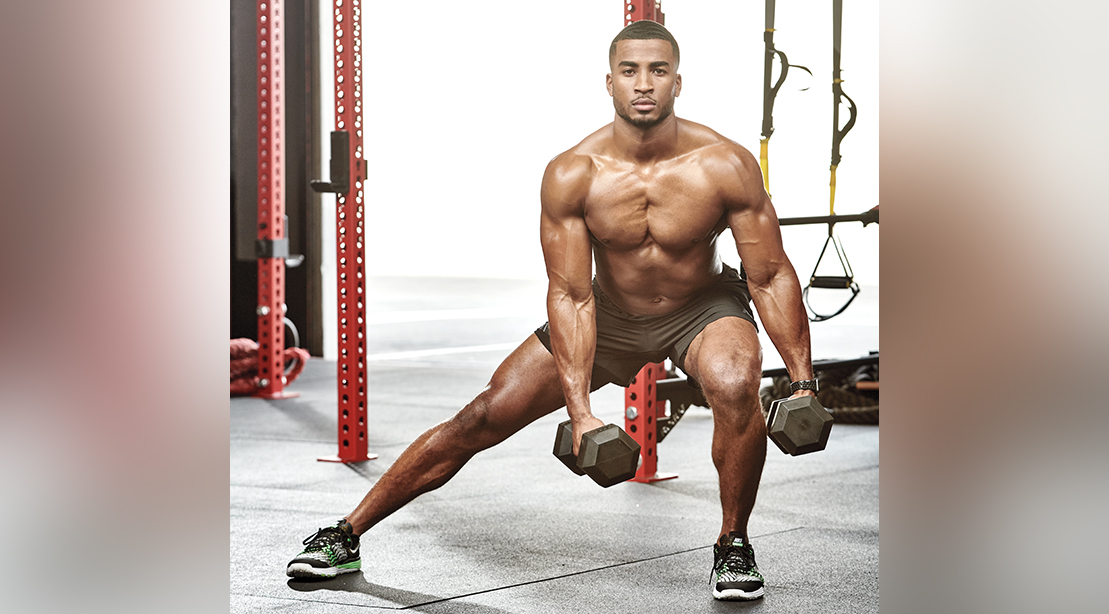28-Days-to-Lean Meal Plan
With the right plan and the right discipline, you can get seriously shredded in just 28 days.
Read article
Gym goals can be broken down into two major categories: vanity and performance. Generally, the Gen Pop gym-goer has vanity goals like more muscle, less fat, getting ripped, etc. The athlete who is paid to play has their eyes on performance. What can they do to improve their performance on the pitch? Although there is a significant crossover between the two, one exercise (of many) will help with both. If you guessed the side lunge exercise, get your gold star on the way out. The side lunge for athletes and general population lifters is great because this is where the gains are made, in the sagittal plane.
The Sagittal plane divides the body into left and right halves (head to toe) and involves forward and backward movements. Your favorite exercises, like squats, deadlifts, bench, and bicep curls, are all Sagittal plane movements. Then, the frontal plane divides the body into front and halves and involves side-to-side motions. Exercises like lateral walks raises, and side lunges live there.
Performing side lunges may be a bit uncomfortable, but strength and conditioning coach Matthew S. Ibrahim, Ph.D. is here to explain why every athlete should incorporate them into their programming.
A side lunge is a frontal-plane unilateral exercise that consists of stepping to the side and sinking into a squat/lunge hybrid, turning this lunge into a mobility and strength exercise. Mobility because the support leg is straight, which stretches and mobilizes the groin muscle. Strength is also needed in the working leg as the adductors, glutes, and quads work hard to pull you out of the lunge and back to the starting position.
“Sports occur in all directions, at various speeds, in challenging positions, and, at times, at lower angles concerning the hips, knees, and ankles. This is precisely why performing lower body training in the frontal plane is so important for athletes across all sports. Forgetting about the frontal plane, you’ll miss a key component to truly excelling in sports: mastering multi-directional strength, speed, and power.
If your goal is to remain strong and durable in your sport, there’s a ton of benefit to training in the frontal plane to improve health in your hip, knee, and ankle joints. Most importantly, strengthening the muscles in your inner thighs (groin/adductors) is another factor that keeps these joints durable.
Note: Sports occur in all directions, especially in the frontal plane. This is why side lunges are so important in training for athletic performance.” explains Ibrahim.
To further back Ibrahim’s point, strengthening and mobilizing the adductors plays a vital role in minimizing lateral movement of the knee joint, where the knee will get into a lot of trouble. When you strengthen the knee joint to withstand lateral movement, you’ll also improve its stability in the sagittal plane.
Strengthening the adductors with exercises like the side lunge will reduce the occurrence of groin strains. A review published in the British Journal of Sports Medicine in 2015 suggested a lack of adductor strength was a significant risk factor for groin strains.
“ The best way to describe technique, form, and coaching cues for all side lunge exercise variations is simple: sit your hips directly behind you while bending one knee (your trunk leans in this direction) and keep your other leg straight, control the descent and ground contact, and then power back up to the standing position.
Most importantly, we shouldn’t see any hiccups in your movement or wobbly transitions. You want highly smooth, controlled, and athletic transitions from start to finish within each rep. The best athletes in the world are also the best movers. Lateral lunges, which are dynamic in nature, are easily the most challenging type of lower-body frontal plane exercise from an athletic development standpoint.” explains Ibrahim.